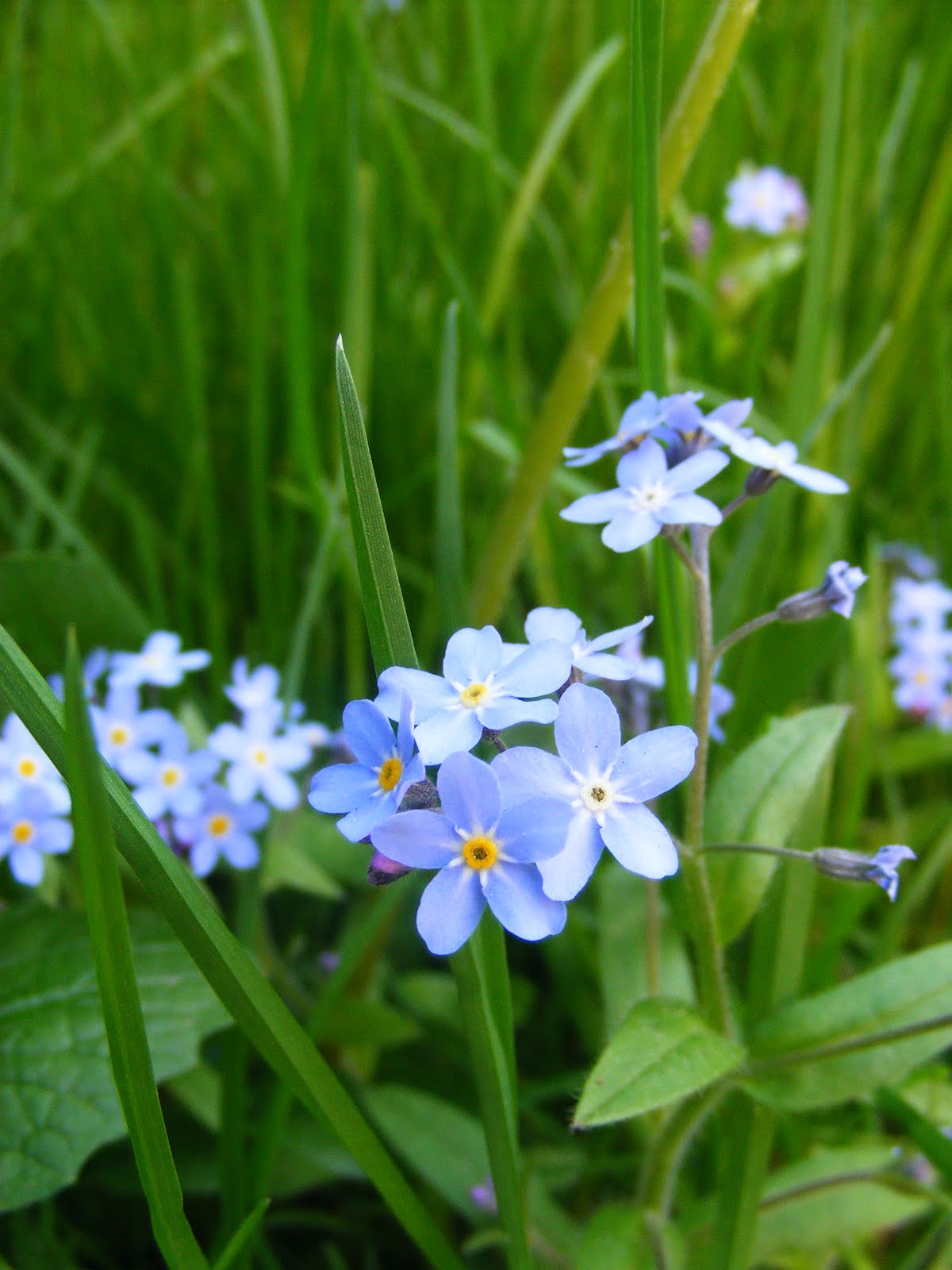Custom Floral Design for your Weddings, Special Occasions, and Corporate Events. Located in Banff, Alberta, Canada.
Written by Eulalia Palomo; Updated August 23, 2019Related Articles
- 1 Malope 'Vulcan' Flower Seeds
- 2 Types of Gardening Flowers
- 3 How Long Do Dianthus Take to Flower from Seed?
- 4 What Pink Flower to Plant?
Once you plant forget-me-nots (Myosotis spp.) you’re not likely to forget them easily. You pretty much can count on seeing new plants growing each spring from last years seeds. This genus of approximately 50 flowering plants includes annuals, biennials and perennials, with slightly different growing patterns. A few species within the genus are invasive, but most grow well with others.
Returning Perennials
Perennial species, like true forget-me-not (Myosotis scorpioides) hardy in U.S. Department of Agriculture plant hardiness zones 5 through 9, live for multiple seasons. In winter, the plants go dormant. Some or all of the fleshy green stems and leaves may die back, but the roots remain alive under the soil. New shoots grow in the spring, followed by small blue flowers in the summer. Seeds develop after the flowering period. Through the year, the roots spread and new plants grow near the original plant.
Fallen Sword. Fallen Sword is a massively multiplayer role playing game set in the exciting and evolving world of Erildath. Players enter the world and explore, adventur. Fallen Sword is a free online role playing game where you can explore and adventure across a vast number of realms with thousands of other players! Fallensword.com Fallen Sword - Free Online Fantasy Role Playing Game. +3000 levels worth of content, realms and creatures. No download Very addictive game! Fallen sword facebook. Fallensword.com Fallen Sword - Free Online Fantasy Role Playing Game Fallen Sword is a free online role playing game where you can explore and adventure across a vast number of realms with thousands of other players!
Short Lived Biennials
Biennial species, like forget-me-not 'Victorian Blue' (Myosotis sylvatica), hardy in USDA zones 3 through 9, grow from seed and take two years to complete the growing process. Generally, the plants germinate and produce leaves the first year, and then flower the second year. During frost, biennials in their first year may die back to the ground and complete the growing cycle the following year. A field of biennial forget-me-nots bloom every year as some are in the first year, while others are in the second year.
Single Season Annuals
Annual forget-me-nots take one year to complete the growing cycle. These varieties, like the small-flowered-forget-me-not (Myosotis stricta), germinate in late winter and early spring, flower in late spring or summer and then produce seeds. Once the seeds disperse the plants die back. The seeds remain dormant through the winter and then germinate in the spring. While biennials and perennials have specific growing zones that depend on low winter temperatures and summer highs, annuals grow in all zones. In hot climates, annual forget-me-nots grow during the cool early spring season.
In the Garden
Add forget-me-nots to perennial beds as a flowering ground cover or add the tiny blue flowers to a rock garden. Members of this genus work well in cottage gardens, border areas and meadows. They will naturalize readily in mild climates, requiring no work from the gardener once established. Butterflies flock to the tiny blue, white and pink flowers, while pesky garden browsers, like deer and rabbits, leave the plants alone. The perennial, true forget-me-not grows well in shallow 3-inch-deep standing water, ideal around ponds or fountains.

Planting Seeds or Starts
In mild Mediterranean climates plant forget-me-nots from seed in fall, winter or early spring. Scatter the seeds in the garden and allow nature to do the rest. You also can plant starts in early spring. Space starts 6 inches apart. Keep the soil moist through the growing season with weekly deep watering for lush, abundant growth. In the fall, after the plants go to seed, you can pull them up to tidy the garden, just make sure the seeds had a chance to scatter if you want new plants next year.
References (4)
About the Author
Eulalia Palomo has been a professional writer since 2009. Prior to taking up writing full time she has worked as a landscape artist and organic gardener. Palomo holds a Bachelor of Arts in liberal studies from Boston University. She travels widely and has spent over six years living abroad.
Photo Credits
- Jupiterimages/Photos.com/Getty Images